Showing Spotlights 545 - 552 of 2780 in category All (newest first):
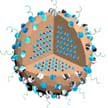 Researchers have for the first time proposed a novel tumor treatment strategy for microwave dynamic therapy to effectively treat cancers. This technique can promote the efficacy of dynamic treatment of deep tumors in clinical research and could have a broad range of applications. The team found that liquid metal supernanoparticles can generate reactive oxygen species (ROS) under microwave irradiation. That makes them suitable as microwave sensitizers for revolutionizing the ROS generation techniques.
Researchers have for the first time proposed a novel tumor treatment strategy for microwave dynamic therapy to effectively treat cancers. This technique can promote the efficacy of dynamic treatment of deep tumors in clinical research and could have a broad range of applications. The team found that liquid metal supernanoparticles can generate reactive oxygen species (ROS) under microwave irradiation. That makes them suitable as microwave sensitizers for revolutionizing the ROS generation techniques.
Jul 25th, 2019
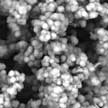 Carbon nano-onions (CNOs), a less studied morphology of carbon nanomaterials, are exotic structures with extraordinary properties and numerous applications. These applications have been largely ignored due to their high synthesis cost. Researchers now have produced inexpensive, stable carbon-nano onions directly from carbon dioxide. The carbon dioxide reactant replaces nano-diamonds as the reactant to form the nano-onions. The source of CO2 to produce these CNOs can be the consumption of industrial flue gas or CO2 directly captured from the air.
Carbon nano-onions (CNOs), a less studied morphology of carbon nanomaterials, are exotic structures with extraordinary properties and numerous applications. These applications have been largely ignored due to their high synthesis cost. Researchers now have produced inexpensive, stable carbon-nano onions directly from carbon dioxide. The carbon dioxide reactant replaces nano-diamonds as the reactant to form the nano-onions. The source of CO2 to produce these CNOs can be the consumption of industrial flue gas or CO2 directly captured from the air.
Jul 19th, 2019
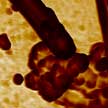 Turmeric has a long history of usage in traditional medicine in India and China. Ancient Indians have known the medicinal properties of turmeric - i.e. curcumin - for several millennia. Researchers have now investigated the antibacterial effects of curcumin loaded into halloysite nanotubes and found that this nanoformulation drastically increased the life expectancy of nematodes infected by pathogenic bacteria. The most interesting finding here is the selective antimicrobial action of curcumin, which suppressed one bacterial species, while demonstrating no adverse effect on another.
Turmeric has a long history of usage in traditional medicine in India and China. Ancient Indians have known the medicinal properties of turmeric - i.e. curcumin - for several millennia. Researchers have now investigated the antibacterial effects of curcumin loaded into halloysite nanotubes and found that this nanoformulation drastically increased the life expectancy of nematodes infected by pathogenic bacteria. The most interesting finding here is the selective antimicrobial action of curcumin, which suppressed one bacterial species, while demonstrating no adverse effect on another.
Jul 15th, 2019
 The recent interest of nanotechnology researchers in liquid metals is based on the properties that differentiate them from common liquids such as water or organics. In addition to their chemical reactivity, the electronic behavior of these liquids, combined with the strong interatomic interactions throughout the bulk, lead to liquids with high densities, thermal and electrical conductivities, and optical reflectivity (over a wide range of wavelengths). This offers potential new approaches for the synthesis of nanomaterials and investigations of fundamental physics and chemistry at small length scales.
The recent interest of nanotechnology researchers in liquid metals is based on the properties that differentiate them from common liquids such as water or organics. In addition to their chemical reactivity, the electronic behavior of these liquids, combined with the strong interatomic interactions throughout the bulk, lead to liquids with high densities, thermal and electrical conductivities, and optical reflectivity (over a wide range of wavelengths). This offers potential new approaches for the synthesis of nanomaterials and investigations of fundamental physics and chemistry at small length scales.
Jul 11th, 2019
 Recently, the investigation of ternary layered compounds with 2D features has emerged. Compared to 2D elements and binary compounds, ternary layered compounds possess more tunability for physical and chemical properties due to more element species. Therefore, exploring the preparation methods and special properties of 2D ternary compounds is of great significance for enriching the 2D material library and expanding the application of 2D materials.
Recently, the investigation of ternary layered compounds with 2D features has emerged. Compared to 2D elements and binary compounds, ternary layered compounds possess more tunability for physical and chemical properties due to more element species. Therefore, exploring the preparation methods and special properties of 2D ternary compounds is of great significance for enriching the 2D material library and expanding the application of 2D materials.
Jul 5th, 2019
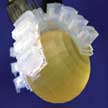 Electronic skin (e-skin) technology will give prosthetics and soft robotics a finer sense of touch, of what's hard and soft, hot and cold, smooth and rough. Researchers have now demonstrated a soft robotic hand integrated with four tactile force sensors and one temperature sensor to give it similar sensitivity to a human hand. By integrating an e-skin, the tactile pressure to grab an object and the friction movement of an object from the hand can be monitored. Thanks to the arrangement of multiple tactile sensors, e-skin-integrated soft robotic hand also can monitor sliding of an object by detecting the time delay of the tactile force.
Electronic skin (e-skin) technology will give prosthetics and soft robotics a finer sense of touch, of what's hard and soft, hot and cold, smooth and rough. Researchers have now demonstrated a soft robotic hand integrated with four tactile force sensors and one temperature sensor to give it similar sensitivity to a human hand. By integrating an e-skin, the tactile pressure to grab an object and the friction movement of an object from the hand can be monitored. Thanks to the arrangement of multiple tactile sensors, e-skin-integrated soft robotic hand also can monitor sliding of an object by detecting the time delay of the tactile force.
Jun 20th, 2019
 There is a huge effort underway to use memristor devices in neuromorphic computing applications and it is now reasonable to imagine the development of a new generation of artificial intelligent devices with very low power consumption (non-volatile), ultra-fast performance and high-density integration. In new work,r esearchers were not only able to achieve to small switching effects in memristors using light, they take advantage of a percolating-like nanoparticle morphology to vastly increase the magnitude of the switching between electronic resistance states when light is incident on the device.
There is a huge effort underway to use memristor devices in neuromorphic computing applications and it is now reasonable to imagine the development of a new generation of artificial intelligent devices with very low power consumption (non-volatile), ultra-fast performance and high-density integration. In new work,r esearchers were not only able to achieve to small switching effects in memristors using light, they take advantage of a percolating-like nanoparticle morphology to vastly increase the magnitude of the switching between electronic resistance states when light is incident on the device.
Jun 19th, 2019
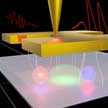 Electronic transitions between confined states within a quantum well are widely used in optoelectronics. Familiar examples include quantum cascade lasers and quantum well infrared photodetectors, which can operate in a wide range of wavelengths, from the far- to near-infrared. There is growing interest in studying this phenomenon because it may enable novel devices such as polariton lasers and because the physics of ISB polaritons is relatively unexplored. Researchers now demonstrated that it is possible to study polaritons in a single isolated nanoantenna.
Electronic transitions between confined states within a quantum well are widely used in optoelectronics. Familiar examples include quantum cascade lasers and quantum well infrared photodetectors, which can operate in a wide range of wavelengths, from the far- to near-infrared. There is growing interest in studying this phenomenon because it may enable novel devices such as polariton lasers and because the physics of ISB polaritons is relatively unexplored. Researchers now demonstrated that it is possible to study polaritons in a single isolated nanoantenna.
Jun 18th, 2019
 Researchers have for the first time proposed a novel tumor treatment strategy for microwave dynamic therapy to effectively treat cancers. This technique can promote the efficacy of dynamic treatment of deep tumors in clinical research and could have a broad range of applications. The team found that liquid metal supernanoparticles can generate reactive oxygen species (ROS) under microwave irradiation. That makes them suitable as microwave sensitizers for revolutionizing the ROS generation techniques.
Researchers have for the first time proposed a novel tumor treatment strategy for microwave dynamic therapy to effectively treat cancers. This technique can promote the efficacy of dynamic treatment of deep tumors in clinical research and could have a broad range of applications. The team found that liquid metal supernanoparticles can generate reactive oxygen species (ROS) under microwave irradiation. That makes them suitable as microwave sensitizers for revolutionizing the ROS generation techniques.
 Subscribe to our Nanotechnology Spotlight feed
Subscribe to our Nanotechnology Spotlight feed





